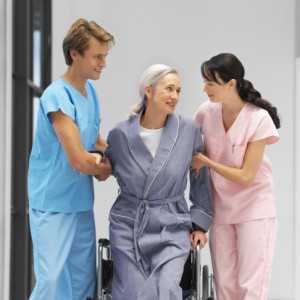No. 1 threat to your nurses: Injuries from lifting Patients & Objects

Nurses jobs are not easy, most are over worked with little to no meal breaks and work an exhausting 12-hour shift, so it's no wonder that America's healthcare workers are at higher risk of injuries sustained from improperly lifting. In 2011, U.S. hospitals recorded 253,700 work-related injuries and illnesses, or 6.8 injuries and illnesses for every 100 full-time employees. This is almost twice the rate for private industry.
1. Embrace patient handling and mobility equipment as a nursing practice standard
Omnimed Inc has worked for years to develop products that ensure patient and nursing safety our latest item are our Powerlifters. Omnimed’ s IV Pole Lift Assist Units are designed to provide hazard-free, ergonomic lifting of solutions during surgical procedures. The single column system is constructed of anodized aluminum poles and a heavy duty cast aluminum base with 6 non-conductive casters to ensure stability. The stainless-steel hanger assembly holds a total of four 5,000 CC irrigation containers and is easily raised or lowered with the use of foot pedals that operate the Pneumatic air glide system on the stand.
2. Gather equipment accessories and check battery status before your shift starts
Some staff nurses don’t use patient handling and mobility equipment because they think it’s too time consuming. Omnimed has worked hard to develop the latest technologies and many of our devices last more than 12-hour shifts. However, the stigma of bad battery life still remains, this belief may stem more from the time it takes them to find equipment accessories than the time it takes to use the device. Having accessories available and checking the equipment’s battery status before your shift starts reduces wasted time.
3. Never underestimate patient-care tasks that require physical assistance
Many nurses have suffered debilitating injuries because they underestimated the equipment, they would need to assist patients physically. To be on the safe side, use your Powerlifter equipment whenever you have the slightest doubt. To help decide if you need to use equipment, address any changes in the patient’s mobility status with the off going nurse at change-of-shift report. In the end you must trust your assessment skills and nursing instincts when determining which type of equipment provides the safest mobility option for both the patient and you.
